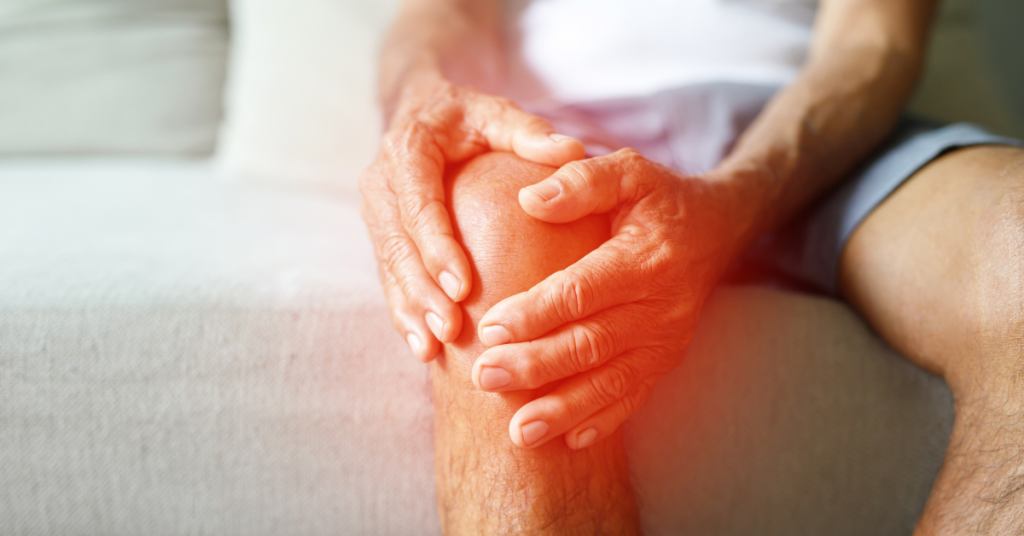Andrigolitis: An Introduction
Andrigolitis is a rare medical condition that affects various systems within the body. Though it is not widely recognized, understanding andrigolitis is crucial for those who may be diagnosed with it. This article aims to provide a comprehensive guide to andrigolitis, its causes, symptoms, diagnosis, and treatment options. If you or someone you know has been diagnosed with andrigolitis, this guide will help you better understand the condition and manage it effectively.
What is Andrigolitis?
Andrigolitis is a medical term used to describe a condition that involves inflammation of certain tissues in the body. The exact causes of andrigolitis are still being researched, but it is believed to be linked to autoimmune responses or bacterial infections. The condition can affect different parts of the body, including joints, skin, and internal organs.
The Main Features of Andrigolitis
The primary feature of andrigolitis is inflammation, which may present itself in various forms depending on the area affected. While andrigolitis is rare, it is important to be aware of its symptoms and seek medical attention if necessary. Some of the most common symptoms include:
- Joint Pain: Inflammation of the joints is common with andrigolitis, causing swelling, pain, and discomfort.
- Skin Irritation: Some individuals may experience rashes, redness, or irritation on the skin as a result of the inflammation.
- Fatigue: The inflammatory response in the body can lead to feelings of extreme tiredness or exhaustion.
- Fever: A low-grade fever may accompany the inflammation in some cases.
Causes of Andrigolitis
Autoimmune Response
One of the leading causes of andrigolitis is an autoimmune response. In this case, the immune system mistakenly targets and attacks healthy tissues in the body. This can lead to chronic inflammation, which is characteristic of andrigolitis. Autoimmune diseases such as rheumatoid arthritis or lupus have been linked to conditions like andrigolitis.
Bacterial or Viral Infections
In some cases, andrigolitis may result from bacterial or viral infections. These infections can trigger an immune response that leads to inflammation in the affected areas. Certain pathogens may specifically target tissues in the body, causing inflammation that manifests as andrigolitis.
Genetic Factors
There may also be a genetic predisposition to developing andrigolitis. If you have a family history of autoimmune diseases or chronic inflammation, you may be at a higher risk of developing this condition. Genetic research is ongoing, and future studies may provide more clarity on how genes contribute to andrigolitis.
Symptoms of Andrigolitis
Joint Swelling and Pain
One of the most common symptoms of andrigolitis is joint swelling and pain. This typically affects the knees, wrists, or hands. As the inflammation spreads, the joints become swollen, warm to the touch, and stiff. This can make it difficult for individuals with andrigolitis to move affected joints and carry out daily tasks.
Skin Rashes and Redness
Andrigolitis can also cause skin reactions. Rashes, redness, or skin irritation may appear, especially in areas where inflammation is most prominent. These skin symptoms are often a result of the body’s immune system targeting the skin’s tissues.
Fever and Malaise
Many individuals with andrigolitis experience a low-grade fever as part of the inflammatory process. This is accompanied by general malaise, or a feeling of being unwell. The body’s response to inflammation can trigger fever and fatigue, which can make it challenging for those affected to go about their daily routines.
Digestive Issues
In some cases, andrigolitis may cause digestive issues, such as nausea, bloating, and stomach cramps. This occurs when the inflammation affects the gastrointestinal system. Although this is not as common as other symptoms, it can be a sign of more severe inflammation in the body.
Diagnosis of Andrigolitis
Diagnosing andrigolitis involves a combination of physical exams, laboratory tests, and imaging studies. Given that andrigolitis shares symptoms with other inflammatory conditions, it is important for healthcare providers to rule out other potential causes.
Medical History and Physical Examination
The first step in diagnosing andrigolitis is a thorough review of the patient’s medical history. Doctors will ask about symptoms, family history, and any recent infections that might have triggered the condition. A physical examination will help assess the areas of inflammation and pain.
Blood Tests
Blood tests can be used to identify markers of inflammation in the body. High levels of certain proteins, such as C-reactive protein (CRP) or erythrocyte sedimentation rate (ESR), are often present in individuals with andrigolitis. These tests help confirm the presence of inflammation and can help differentiate between various types of inflammatory conditions.
Imaging Tests
In some cases, imaging tests like X-rays or MRI scans may be needed to examine the affected joints or tissues. These scans can reveal structural damage caused by chronic inflammation, helping doctors assess the severity of the condition and make treatment recommendations.
Treatment Options for Andrigolitis
Medications to Control Inflammation
The primary treatment for andrigolitis involves medications to control inflammation and alleviate symptoms. Non-steroidal anti-inflammatory drugs (NSAIDs), such as ibuprofen or naproxen, are commonly prescribed to reduce swelling, pain, and fever. In more severe cases, doctors may recommend corticosteroids to provide stronger anti-inflammatory effects.
Disease-Modifying Antirheumatic Drugs (DMARDs)
For individuals with autoimmune-related andrigolitis, disease-modifying antirheumatic drugs (DMARDs) may be prescribed. These medications help suppress the overactive immune response that causes inflammation. By targeting the underlying autoimmune reaction, DMARDs can help prevent further tissue damage and improve long-term outcomes.
Biologic Therapy
In cases where traditional medications are ineffective, biologic therapies may be considered. These treatments work by targeting specific molecules involved in the inflammatory process, helping to reduce the severity of andrigolitis. Biologics are typically used in patients with moderate to severe cases.
Lifestyle and Dietary Changes
In addition to medication, lifestyle and dietary changes can play a significant role in managing andrigolitis. Regular exercise, a balanced diet, and stress management techniques can help reduce inflammation in the body. Some patients find relief by incorporating anti-inflammatory foods, such as omega-3 fatty acids and antioxidants, into their diet.
Physical Therapy
Physical therapy may be recommended for individuals who experience joint pain and stiffness due to andrigolitis. Through exercises and stretching techniques, physical therapists can help improve mobility, reduce pain, and prevent further joint damage.
Living with Andrigolitis
Living with andrigolitis can be challenging, but with proper treatment and management, individuals can lead fulfilling lives. Regular follow-up appointments with healthcare providers are essential to monitor the progress of the condition and make adjustments to the treatment plan as needed.
Support Groups
Joining a support group for individuals with autoimmune or inflammatory diseases can provide emotional support and practical advice. Being in touch with others who understand the challenges of living with andrigolitis can be invaluable for coping with the emotional and physical toll of the condition.
Conclusion
Andrigolitis is a complex condition that can significantly impact a person’s quality of life. By understanding the causes, symptoms, and treatment options available, those affected can take proactive steps toward managing the condition effectively. Whether it’s through medications, lifestyle changes, or physical therapy, there are various ways to reduce the impact of andrigolitis and live a healthier, more comfortable life. If you suspect you have andrigolitis, consult a healthcare professional for a proper diagnosis and treatment plan.


